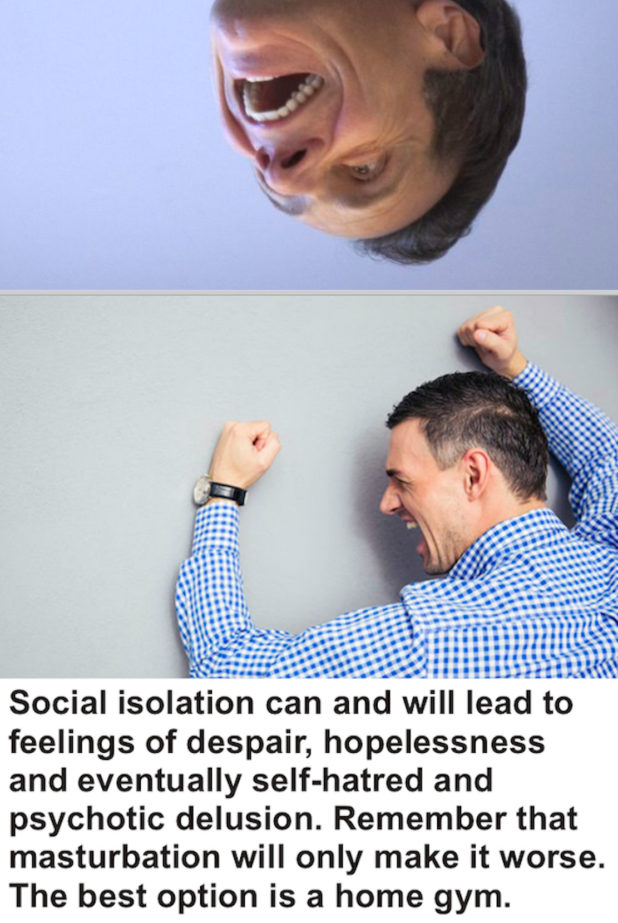Pomidor Quixote
Daily Stormer
March 27, 2020

It appears that people will spend most of 2020 in isolation.
They’d better start paying people to stay locked inside.
It’s unlikely one single, long stretch of “social distancing” is going to solve COVID-19 for the US before a vaccine arrives, say Harvard researchers. Instead, it may be necessary to keep having periodic intervals of quarantine until the US healthcare system is fortified.
For those wondering how long they’ll have to be in quarantine because of the COVID-19 respiratory disease, the question for those in the US may not be how long, but how many times.
Work posted on the medRxive pre-print server Tuesday by a group of researchers at Harvard’s T.H. Chan School of Public Health in Boston suggests that multiple targeted periods of “social distancing” of various kinds will likely be necessary for the US before any vaccine is found for the disease.
“Oh, we know you’re all tired of these social isolation periods, which is why we worked hard to be able to offer you this mysterious liquid that, if injected into your body, will allow all of you to return to normal life.”
There’s a tension in fighting COVID-19: So-called herd immunity needs to be built up, which requires that the disease be allowed to spread to some extent, for without exposure, that immunity will never be built. But the disease must not spread so much that it overwhelms the US’s medical resources.
In “Social distancing strategies for curbing the COVID-19 epidemic,” authors Stephen Iissler, Christine Tedijanto, Marc Lipsitch, and Yonatan Grad of the Chan School write that “a single period of social distancing will not be sufficient.”
Paradoxically, going into an intense quarantine with nothing to follow it can actually be counter-productive.
Without repeated intervals of distancing, “there was a resurgence of infection when the simulated social distancing measures were lifted” in the model scenarios they ran.
The authors found that a resurgence could happen even after especially arduous periods of distancing, such as a 20-week period of social distancing. “The social distancing is so effective that virtually no population immunity is built.”
The Netherlands and Sweden are betting on building population immunity in a controlled manner, which is a much saner approach than “everyone needs to panic right now and remained locked in their homes for who knows how long.”
Suspiciously enough, the full lockdown approach makes a vaccine look much more necessary.
Instead, the authors argue interventions need to be made multiple times over a period of time, called “intermittent distancing,” at intervals that depend upon the state of the health care infrastructure at any moment in time, meaning, how much load it can absorb of critical care cases of the disease.
“Intermittent social distancing can maintain critical care demand within current thresholds,” they advise.
…
US President Donald Trump has referenced a theory that COVID-19 will abate in April, but it’s not certain that COVID-19 will follow a seasonal pattern, as Science Magazine’s Jon Cohen pointed out last week. “No one knows whether SARS-CoV-2, the virus that causes COVID-19, will change its behavior come spring,” he writes.
The issue, then, becomes one of closely monitoring infection rates in the population. For that, the Harvard authors note, blood tests are necessary to tell who in the population has developed antibodies for the disease. That would provide a broader indicator of who is sick, including the people who are “asymptomatic.” It would also be a way to measure how many people in the society have already been through an infection and recovered, thereby reducing the susceptible population. Numerous efforts are ongoing to design the antibody tests, which are different from the main genetic tests used to tell if people have COVID-19.
“Widespread surveillance will be required to time the distancing measures correctly and avoid overshooting critical care capacity,” the authors observe.
What if you don’t want to give them some of your blood and your whereabouts?
What if you don’t want to be surveilled?
They note, too, that the lower the amount of medical infrastructure, the longer it takes to build immunity. If immunity is a function of letting the virus run wild, then immunity is interrupted every time cases go over a threshold and lead to more quarantine.
Building up medical infrastructure could solve that, they argue.
“Increasing critical care capacity allows population immunity to be accumulated more rapidly, reducing the overall duration of the epidemic and the total length of social distancing measures.”
Unless capacity is built up, social distancing could likely be required into 2022, the authors write.
Hence, the most intriguing lesson of the paper may be that US society has a choice: build up the healthcare system and get back to normal, or else spend a long time going in and out of quarantine.
How about we just let all boomers and obese people die instead and carry on with our lives?
Boomers already lived their lives and pretty much ruined everything for future generations, and the obese inflicted obesity and all of its related diseases onto themselves.
It’s not fair that healthy people have to suffer in order to save the lives of those beings.


